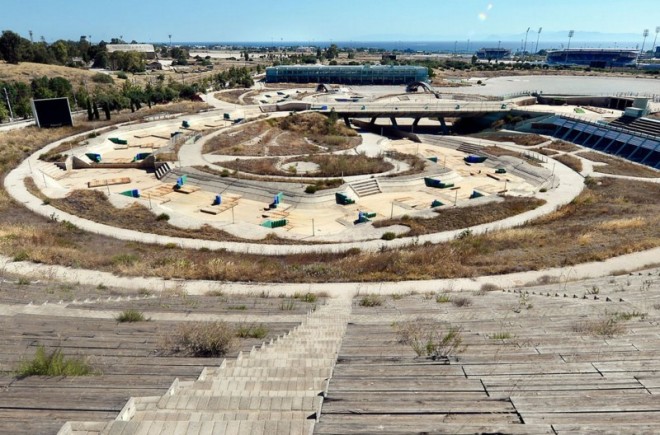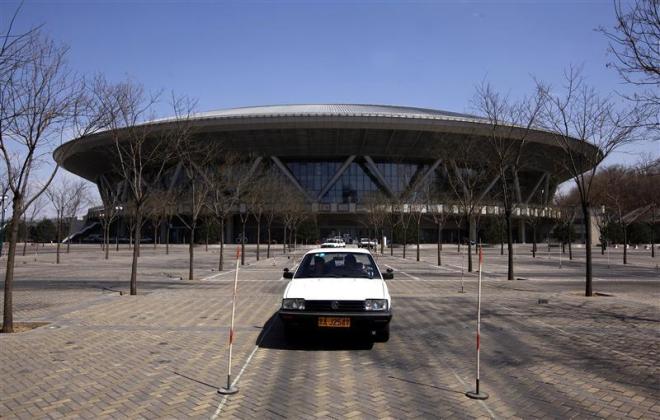
“Patriotism is the last refuge of a scoundrel.” Samuel Johnson, 7 April 1775, quoted by James Boswell in The Life of Johnson (1791)
I have in recent days taken to hiding under the bedclothes as late as possible each morning, partly as a defence against the unusually prolonged winter cold in Athens, but principally in terror of what fresh horrors await me on the front pages of multiple global broadsheets every day.
Britain is in a state of Brexit-induced catalepsy alternating with periodic spasms of delusional disorder as a result of the dueling incompetence of its coalition government and the official opposition; the US is quite literally gridlocked as the President and the newly ensconced Speaker of the House are engaged in a metaphorical schoolyard brawl; and yellow-vested protesters of distinctly Breton-bent, egged on by the only honest media outlets still standing – RT and Sputnik – have brought generalized, incoherent and gratuitously violent outrage at Emmanuel Macron to the streets of Paris and beyond. However, one Tuesday morning recently I was joined under the duvet by my terrified terrier pal B., shivering in his haste to find a safe space beneath the blankets.
No thunderstorms were forecast, there was no flash of lightning, and the fireworks of New Years were well, and gratefully, behind us. But then seconds later I heard and, indeed, felt it. Low-flying fighter aircraft described a lazy arc across the Athenian sky, rattling the glass in our little downtown hovel. Turning on the television, there before me was a military gathering the likes of which is usually reserved for the 28th of October – ‘Oxi’ Day. Taking up a disproportionate amount of the frame was the sizable figure of the outgoing Minister of Defence, Panos Kammenos, dwarfing the newly-defrocked Admiral and head of the Greek armed forces who was to take his place standing by his side.
The many faces of Panos, all captured within a period of 72 hours.
Normally the handover from one civilian to another of the Defence Minister’s desk takes place in a Ministry reception area, with staff gathered ’round to politely applaud. Not so this time. In scenes lifted straight from the criminally-neglected Richard Dreyfuss vehicle Moon over Parador, bands played, soldiers marched, rifles twirled and jets roared, with framed trophies, swords and other military paraphernalia presented one by one to the soon-to-be former minister by a seemingly endless parade of spit ‘n polish uniformed officers. Not bad for a man who (it is widely believed) avoided the mandatory military service required of every able-bodied Greek male. As my editor Atlantis Host says below, this was chicken hawkery of the highest calibre.
But it was this last point that reminded me of someone else, also plus-sized in the tailored suit department, given to using childish bullying and obscene personal insults as political discourse, with a finger on the pulse of the angry man (and woman) in the street. Populism’s genius, of course, is that it conjures up whatever bogeyman the public believes lies in wait beneath their bed, then launches a crusade to slay it. As a writer in the Guardian put it, you cannot free yourself from an imaginary oppressor. Nor can you ever sufficiently defend yourself against a non-existent enemy. In pre-Referendum Britain, the imagined assault on the nation came in the form of invisible Romanians, rushing towards Blighty to steal jobs and sign on for public benefits. In the US, it is invisible hordes of gun-toting murderers, rapists and drug mules, wading across the Rio Grande. In Greece it is the dangling threat of an impoverished country less than one-fifth its size on its northern border deploying the word ‘Macedonia’ in its name as but the first salvo in the Republic of Northern Macedonia’s future claims to the northern half of Greece. And behind all of this? George Soros, of course.
If you repeat a patent falsehood enough times, while feigning loud, righteous indignation at the failure of the ‘establishment’ to act in the face of such a clear and present danger, it’s amazing what you can get away with. The more outrageous the lie, the more likely it will find a receptive public. This is a point made time and again by historian Timothy Snyder in The Road to Unfreedom, as he describes Russian efforts to meddle in and discredit the EU, the US and democracy generally as a tool for maintaining the domestic stranglehold on power by Vladimir Putin. Big lies must be true because, uh, who would say something so outrageous if they weren’t? Such logic is impervious to critical assault.
The thing about populists is that, whether they be of far left or far right persuasion, they find common cause in blaming all of society’s ills on the evil centre. While some may marvel at the perfidy of the current British Tory government in paying a £1 billion bribe to the minuscule, rabidly anti-Catholic and previously politically irrelevant Democratic Unionist Party of Northern Ireland in order to secure their handful of MPs to form a government, broadly speaking there is at least some wafer-thin sliver of Tories who might find themselves in agreement with their Irish colleagues. Here in Greece, the story is rather different: SYRIZA, the self-anointed ‘first’ (sic) ‘leftist’ government in Greece (eliding over the Panhellenic Socialist (PASOK) government that swept to power in 1981 under Andreas Papandreou) headed by Alexis Tsipras, found its path to power not through an outright parliamentary majority, but in forming a coalition with the minuscule, far right fringe Independent Greeks (ANEL). If one were to describe two political parties as ‘mirror images’ of one another in the true sense of the phrase, you could do no better than point to the SYRIZA-ANEL marriage of convenience.
SYRIZA is composed of a ragtag bunch of fringe Trotskyites and Leninists tossed out of the official Greek communist party (KKE) as heretics, as well as opportunistic, finger-in-the-wind ex-PASOK MPs and a range of chemtrail-fearing, anti-American, anti-NATO, anti-Soros, pro-Russian rubes. ANEL, on the other hand, is composed of a, er, ragtag bunch of far right fringe, church-backed, hawkish, anti-American, anti-NATO, anti-Soros, pro-Russian ultra-nationalists and opportunistic finger-in-the-wind ex-Nea Demokratia MPs who sniffed an opportunity to get their snouts in the trough. You get the picture.
At the head of ANEL stands our hero Panos Kammenos, a foul-mouthed, church going, conspiracy theory-espousing, hard-partying scion of wealth, who – as noted above – having (allegedly) successfully managed to avoid military service (did I hear someone at the back of the room say ‘bone spurs’? – Ed.), was rewarded for his enabling SYRIZA to seize the reigns of power with the portfolio of Defence Minister. He has used the post and all its perquisites to jet, jeep, tank and helicopter around the provinces dressed in camo whenever possible, posing before a Greek flag and drawing lines in the sand. No, I’m not making this up.
Among his habits are that of threatening to sue journalists who dare print anything critical about him (astonishingly, sitting politicians in Greece can sue for libel and slander, and in some cases have journalists arrested; whether they win is of little consequence as the legal costs of defending against such charges in the sclerotic Greek judiciary are prohibitive … thus the mere threat of legal action has an all-too-predictable chilling effect on the publication of critical journalism) and using obscene innuendo and personal insults against political opponents. Much of this bombast is delivered via Twitter. Sound familiar?
In his custom tailored military regalia, Kammenos looked the part of the defence minister for sale to the highest bidder. Even though he’s left that post behind (presumably he got to keep the uniforms, bomber jackets and baseball caps), the swagger he developed as leader of the one Greek ministry virtually untouched by the bone-crushing austerity of the past decade continues full bore. Just as his American counterpart and role model (don’t think Panos doesn’t have his eyes on a bigger prize) sounds like a regional sales director addressing the annual conference, so too Kammenos peppers his speech with out-sized hyperbole and thuggish threats. Even in his irrelevance – ANEL have lost most of their handful of MPs to defections to SYRIZA (they too having acquired a taste for power) – he continues to be newsworthy as the coalition of convenience lives on in fact if not in name.
Like the Godfather of all political blaggers Silvio Berlusconi, Panos Kammenos may well seek to stay relevant in politics as long as possible for no other reason than the immunity from prosecution afforded sitting MPs and ministers. The same has been said of Trump, as an army of eagle-eyed Federal, state and municipal prosecutors comb through his business records, ‘charitable’ foundations, his ‘university’, etc., in an effort to ‘walk the cat back’ and sniff out the sham business deals, the fraudulent contracts, and a multitude of other criminal acts that have been hiding in plain sight for years.
Just as his senior American counterpart has been at this game of smoke and mirrors for decades, Panos Kammenos in the Greek variant also has decades of form in the business of peddling delusional conspiracy and bellicose faux-patriotism.
Almost from the day The Donald took the oath of office, people have asked ‘what will come after Trump?’. The assumption on the part of many middle-of-the-roaders is, ‘a return to normalcy’. I hate to break it to you, but at least over here in Europe, the answer is likely ‘more Trump’. Just ask the folks in Italy, France, Hungary, Poland, the UK … and Greece.
















